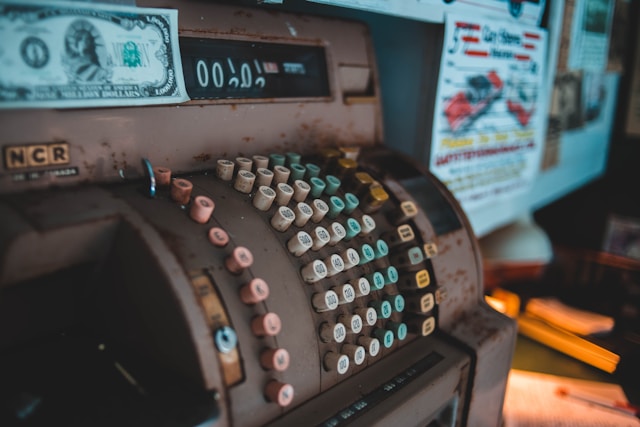How to Mine Cryptocurrency : A Comprehensive Guide

How to mine Cryptocurrency has gained significant attention in recent years due to the rising popularity and value of digital currencies. This comprehensive guide aims to provide beginners with a step-by-step approach to understanding and engaging in cryptocurrency mining. You’ve probably read it already: Cryptocurrency Hardware Wallets: The Ultimate Guide to Secure Storage. Starting with an explanation of what cryptocurrency mining is and its importance, we will delve into the technical aspects, hardware and software requirements, and the process of setting up a mining rig. Additionally, we will explore joining mining pools, optimizing the mining process, security considerations, calculating profits and ROI, and future trends in the industry. By the end of this article, readers will have a solid foundation to begin their How to mine Cryptocurrency mining journey responsibly.
See also : Exploring the Power of Ethereum Smart Contracts: Revolutionizing New Transactions

Understanding How to Mine Cryptocurrency
Before diving into the mining process, it is crucial to grasp the fundamentals of cryptocurrency. Cryptocurrencies are digital assets that utilize blockchain technology for secure transactions. Mining, in the context of cryptocurrencies, refers to the process of validating and adding new transactions to the blockchain ledger. This process requires solving complex mathematical puzzles using computational power.
Cryptocurrency mining operates on two major algorithms: Proof of Work (PoW) and Proof of Stake (PoS). PoW involves miners solving puzzles through computational power, while PoS relies on participants holding a certain amount of the cryptocurrency to validate transactions. Each algorithm has its own advantages and considerations.
To begin mining, individuals need to select the right cryptocurrency. Popular choices include Bitcoin, Ethereum, and Litecoin. Factors to consider when selecting a cryptocurrency for mining include its potential profitability, network difficulty, and available mining software and hardware support.
Getting Started with How to Mine Cryptocurrency
To engage in How to mine Cryptocurrency, specific hardware and software requirements must be met. Hardware options include Central Processing Units (CPUs), Graphics Processing Units (GPUs), and Application-Specific Integrated Circuits (ASICs). CPUs and GPUs are more commonly used for mining, while ASICs are specialized devices for specific cryptocurrencies.
The software aspect involves mining software and wallet software. Mining software enables the mining rig to connect to the network and perform the necessary computations. Wallet software, on the other hand, is used to store and manage the mined cryptocurrencies securely.
Once the hardware and software requirements are met, the next step is to set up a mining rig. Finding the right location is crucial, as mining rigs generate heat and noise. It is advisable to choose a well-ventilated area with adequate cooling and minimal distractions.
Assembling the hardware components involves connecting the necessary cables, mounting the graphics cards, and ensuring proper power supply. Afterward, the mining and wallet software need to be installed and configured according to the chosen cryptocurrency.
Joining a Mining Pool How to Mine Cryptocurrency
While it is possible to mine cryptocurrency individually, joining a mining pool offers several advantages. Mining pools bring together multiple miners who collectively contribute their computational power to increase the chances of solving mining puzzles and receiving rewards. By joining a pool, miners can achieve more consistent earnings and reduce the impact of mining difficulty.
Finding a reputable mining pool is essential to ensure fair distribution of rewards and reliable operations. Extensive research and reading user reviews can help identify trustworthy mining pools. Once a suitable pool is selected, miners need to register an account and configure their mining software to connect to the pool.
Mining Process and Optimization How to Mine Cryptocurrency
With the mining rig set up and connected to a pool, it’s time to start the mining process. The mining software will automatically connect to the network and begin solving computational puzzles. It is crucial to monitor the mining operation regularly, ensuring that the rig is running smoothly and efficiently. Factors to consider include temperature, power consumption, and hash rates.
To optimize mining efficiency, several strategies can be employed. These include adjusting mining software settings, optimizing hardware configurations, and staying up to date with the latest mining algorithms and techniques. Miners should also be aware of electricity costs and ensure that the potential mining rewards outweigh the expenses.
Security and Safety Considerations How to Mine Cryptocurrency
In the world of cryptocurrency mining, security is paramount. It is crucial to protect both the mining rig and the mined cryptocurrencies. Implementing strong passwords and enabling two-factor authentication (2FA) can help safeguard mining-related accounts and wallets. Regularly updating and patching software vulnerabilities is also vital to prevent potential security breaches.
Additionally, miners should be cautious of phishing attempts, suspicious websites, and malware that can compromise their rigs or steal their cryptocurrencies. Using reputable antivirus software and practicing safe browsing habits can mitigate these risks.
Calculating Profits and ROI How to Mine Cryptocurrency
Mining profitability depends on various factors such as electricity costs, mining difficulty, hardware efficiency, and cryptocurrency market prices. By estimating these variables, miners can calculate their potential profits and Return on Investment (ROI). Several online calculators and mining profitability tools are available to simplify this process.
Future Trends in How to Mine Cryptocurrency
As the cryptocurrency landscape evolves, mining algorithms and practices are likely to change. One notable trend is the shift from PoW to PoS algorithms, which consume less energy and offer a more eco-friendly approach to mining. Miners should stay informed about industry developments and adapt their mining strategies accordingly.
Conclusion How to Mine Cryptocurrency
Cryptocurrency mining offers a unique opportunity for individuals to participate in the digital currency ecosystem. By following the steps outlined in this comprehensive guide, beginners can acquire the knowledge and skills needed to mine cryptocurrencies effectively. Remember to research and select the appropriate hardware, join reputable mining pools, optimize mining operations, prioritize security measures, and stay up to date with the evolving trends in the industry. With a responsible approach and ongoing education, individuals can embark on their cryptocurrency mining journey with confidence.
And for those of you who want to grow your Instagram account, you can directly use our service free instagram followers and you can like your post on instagram with Free instagram likes







